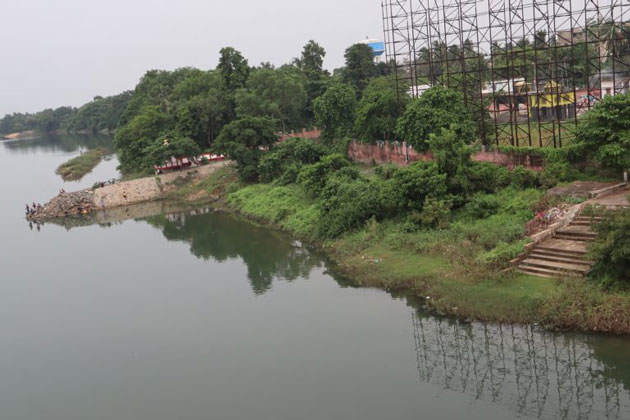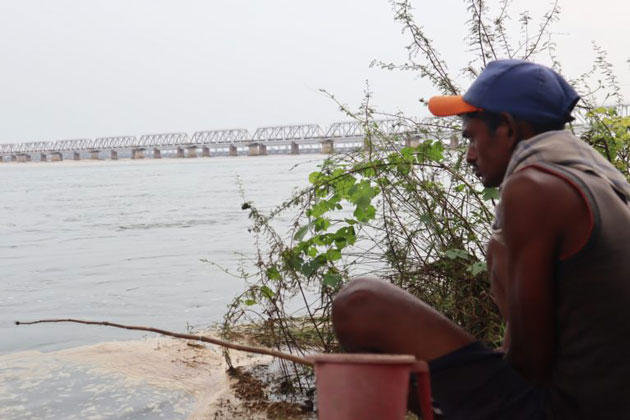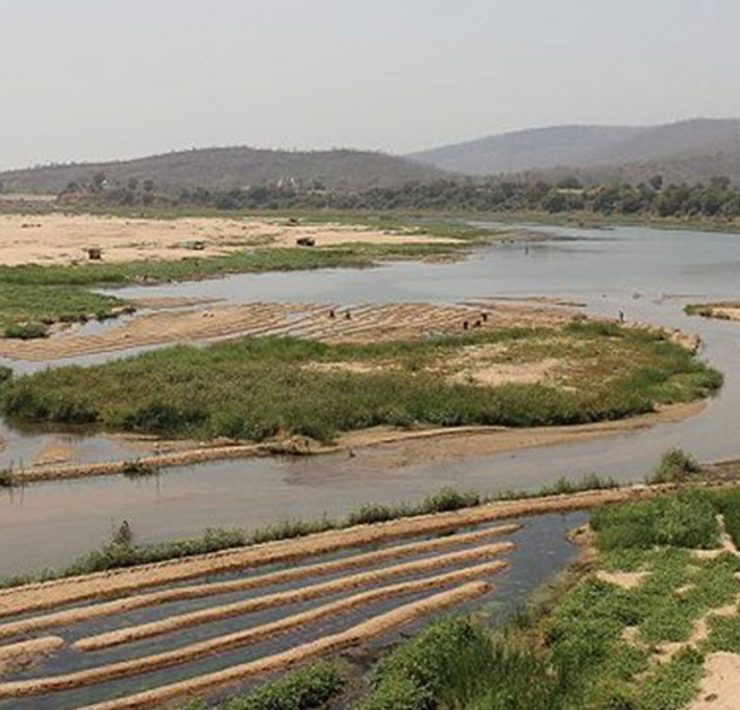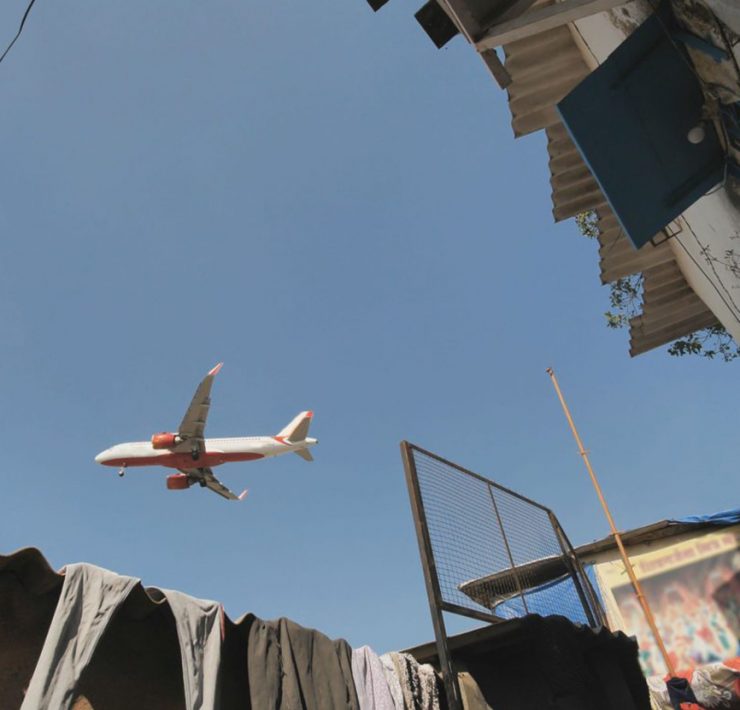With poor regulation of floodplains, India is more vulnerable to flood damage

- Floodplains play a key role in nutrient replenishment and naturally controlling overflowing rivers from causing damaging floods.
- India has poor regulation of its river floodplains.
- As flood risk increases in India, experts suggest demarcation of zones in floodplains and stronger state policies to reduce damage by floods.
Floods in different parts of India, in the last few decades, have taken a toll on the economy, livelihood and human lives. According to the official estimates of the Central Water Commission (CWC), as cited in a NITI Aayog report, the country on an average lost Rs. 5,649 crore (Rs. 56.49 billion) and 1,654 human lives, annually, to floods between the years 1953-2018.
Several government agencies and experts have attributed the increasing frequency and damages caused by floods, to the encroachments in the floodplains of Indian rivers. A 2018 report of the Comptroller and Auditor General of India (CAG) attributed encroachment in the floodplains of Tamil Nadu rivers and failure to act on the same, as a prime reason for the Chennai floods of 2015 which killed around 300 persons. The auditor went on to term the deluge as a “man-made disaster”.
Environmentalists in the past have also blamed floodplain encroachments for playing a role in the floods of Kerala, Pune, Odisha and other states which claimed hundreds of lives in the last few years. Encroachments illegally, as well as through legal ways by the state governments, have allegedly made the floodplain areas more prone to flooding, say experts.
“Rivers do not always flow in a fixed line but have the virtue of expanding on both sides of the rivers, several times in a year. Here the floodplains allow them a comfortable zone to accommodate the excess water and prevent flooding of human settlements. However with the passage of time, these floodplains have become victims of illegal as well as planned legal invasion from the governments across the country,” said Jayshree Vencatesan of Care Earth Trust, Chennai.
She cited the example of planned development works, such as apartments and other industrial establishments, on the natural floodplains of Adayar River in Tamil Nadu. In Chennai floods of 2015, the river waters inundated several human settlement areas along its floodplains.
Courts’ interventions
India does not have stringent legislation to govern the Indian river floodplains. In a recent case of encroachment on the floodplains of Mahanadi river at Cuttack in Odisha, the National Green Tribunal (NGT) raked up the issue of the lack of norms and laws on floodplain zoning in the country and states and constituted a committee to look into the matter in the state. This was against a petition where the alleged proposed expansion of a medical college and riverfront project in Cuttack came under the lens of the tribunal.
The Joint Committee comprising the water resources department, State Pollution Control Board, Central Pollution Control Board and Central Water Commission in its report also admitted before the NGT that floodplain encroachments had been a prime reason for the floods in Kerala and Pune and other areas and needed protection from human encroachment.

Post this order, the Odisha government is now working to frame norms for floodplain protection of the Mahanadi river. Shankar Prasad Pani, the petitioner’s lawyer in the case, told Mongabay-India that the issue of floodplain encroachment had been across the state in different river systems due to the lack of any concrete law protecting it from encroachment. In the past, other orders of the NGT had also batted for floodplain zoning and clear demarcations of the vulnerable areas to better mitigate floods in the country.
The tribunal, in its 2015 order, in the case of Manoj Mishra Vs Union of India relating to the issue of Yamuna and Ganga rivers had ordered demarcation of the floodplains and directed that floodplain zoning should be taken with the reference of flood once in 25 years.
In another case in 2017, the NGT in MC Mehta Vs Union of India case had also talked about categorisation of different floodplain zones into zones like No Development Zone, Regulated Zone and a Free Zone for Development while hearing the issues related to the Ganga river.
Allahabad High Court and other HCs in the past too had ordered flood plain protection. “There are several fragmented orders and judgments from the NGT, HC and other judicial bodies. However despite such orders coming from the courts, the ground-level implementation of these had always remained far from adequate,” said Himanshu Thakkar, River Water expert and Coordinator of South Asia Network on Dams, Rivers and People (SANDRP).
Policy framework for floodplains
The Ministry of Water Resources in 1975 had issued a draft Model Bill on floodplains and asked the states to frame legislation. Land and flood management is a state subject.
The National Disaster Management Authority (NDMA) in 2008 also issued guidelines for states for floodplain zoning as an important “non-structural measure” to mitigate floods. It suggested that areas likely to be affected by floods in a frequency of 10 years should be reserved for green areas like parks, gardens and others while concrete structures should not be allowed there. It also talked about other zones in the flood plain like in areas of flooding in a 25-year frequency and asked states to make plans accordingly in those areas.
However, experts said that these two central policy measures are insufficient. “These are at best only suggestive and non-binding to the states. There is hardly any state in India that has taken the issue seriously. One can see no impact of these on the central government’s own programmes, plans, policies and actions. These provisions do not fix accountability on any of the concerned authorities. Is there a single Indian state that has actually, strictly implemented a law to prevent encroachment on floodplain?” Thakkar asked.
Different states meanwhile have taken largely token measures or formulated norms for the protection of the floodplains but Thakkar said most of them failed to fixed accountability and were not strong enough to protect the floodplains.
Looking at policy action at the state level, Manipur was among the first to frame the Manipur Flood Zoning Act in 1978, while Uttarakhand came up with the Uttarakhand Flood Plain Zoning Act 2012. The Maharashtra government also created norms to regulate and talked about prohibitory zones in floodplains of its rivers.
In a study conducted by Observer Research Foundation (ORF) in 2020 by researchers Sayanangshu Modak and Preeti Kapuria titled ‘From Policy to Practice: Charting a path for Floodplain zoning in India’, the authors batted for going beyond the centre-state jurisdiction issues and opting for a river basin approach in implementing flood plain zoning in the country’s integrated flood management approach.
Modak told Mongabay-India that the process of floodplain zoning is a complex issue and has different dimensions related to it and that could be one of the reasons behind the state’s reluctance to frame the floodplain zoning norms.
“If states frame strict floodplain zoning laws, it could involve displacing the people and their settlements in floodplains. Normatively, it will necessitate compensating those displaced, their rehabilitation and enabling alternate sources of livelihood – a complex, long-term but sustainable management that requires strong political will,” he said.
“Thus, political stakes could be another reason that might prevent states to take stern steps in this regard. However the delay can only make the floodplains more vulnerable to encroachments and make the river basins more prone to flooding,” he added.

Modak also said that the most flood-hit areas of India like Bihar, Assam, West Bengal and others hardly have any policies and laws to protect its floodplains.
The 2021 report of a NITI Aayog Committee, for the formulation of strategy for flood management works in the country, also recommended floodplain zoning as an important non-structural measure to counter flood damages. The report also urged the Jal Shakti Ministry to impress upon the states on the need to take measures to ensure floodplain zoning. The NITI Aayog in its report said that the ministry and the Aayog have planned to consult all states to understand the problems and situations in their areas for a floodplain zoning plan.
Climate change and floods
Climate change experts who have studied and researched floodplains and floods in India claimed that the country has seen an increased frequency of floods in the past few decades.
K.C. Patra, professor at the National Institute of Technology (NIT), Rourkela who has, for more than 40 years, researched floods and floodplains told Mongabay-India, “Now the floods have become more frequent and causing more damage. This is because of the encroachments as well as impact of climate change. Now we see increase in the peaks of floods and its frequency have increased in the country in the last few decades raising more concerns of flood vulnerabilities.”
Patra batted for physical demarcations of flood plains and segregated colouration of these zones to inform the public and others above the different zones of the floodplains.
He also objected to the policies of few states of paying compensation on the loss of properties of illegal settlers on the floodplains in cases of floods and urged the governments to end the practice to discourage illegal encroachments to the vulnerable areas.
Other experts meanwhile cited the examples of other countries where floodplain zoning works have also resulted in affecting the property insurance and other policies.
Balaji Narasimhan, professor at the Indian Institute of Technology (IIT), Madras cited the example of some European countries and the United States where insurance firms charge a higher premium on flood insurance for people living closer to the floodplains and lesser for those living away from the vulnerable sites.
“In countries like the U.S., UK, Germany and others, insurance firms take more premiums from people living in areas more closely to the floodplains. On the other hand, areas which are away from the floodplains are considered safe there and also the citizens living there pay lesser compared to those living in vulnerable areas,” he said.
Balaji’s interpretation is also validated by some international studies too. A study titled ‘National laws for enhancing flood resilience in the context of climate change: potential and shortcomings’, published by Sara Maharyar and Swenja Surminksi from the London School of Economics also talked about the role of flood insurance in the U.K. and U.S.
The authors in their report said that the laws in these countries were amended for allowing higher insurance premiums for properties lying within floodplains, to reflect the risks of living in such vulnerable areas.
This article first appeared on Mongabay.










